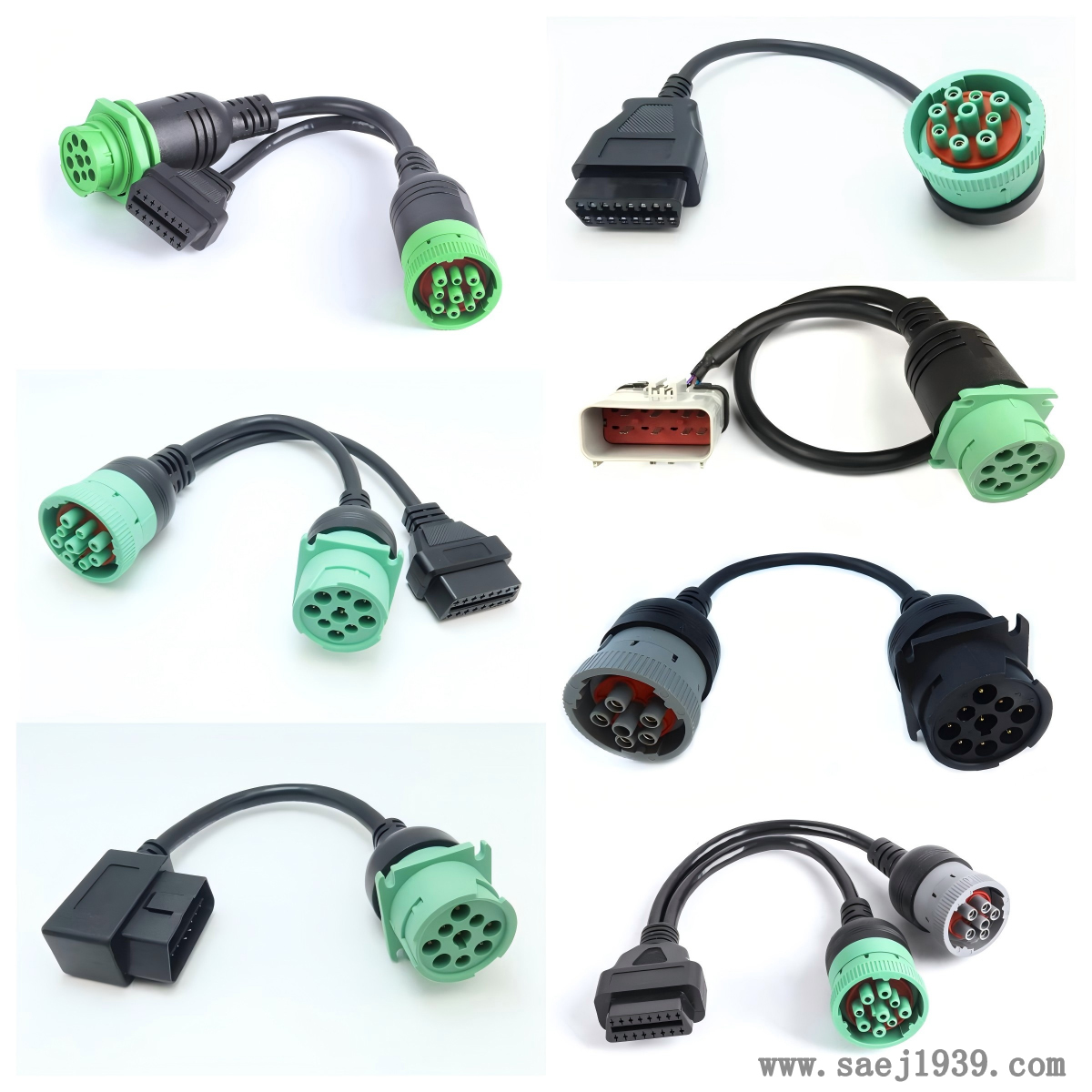What tools are available to test the signal quality of J1939 to J1708 cables?
Here are some tools that can be used to test the signal quality of J1939 to J1708 cables:
oscilloscope
Working principle: The oscilloscope can display the waveform of the voltage of the electrical signal changing over time in real time. By connecting the oscilloscope to the signal line of the J1939 to J1708 cable, the waveform, amplitude, frequency, and other parameters of the signal can be observed, thereby determining the quality of the signal.
Application scenario: Used to detect whether there are distortion, noise, interference and other issues in the signal. For example, if the signal waveform shows distortion, jitter, or additional clutter, it indicates that there may be a problem with the signal quality. It can help determine whether the rising and falling time of the signal meets the standard, and whether the amplitude of the signal is within the normal range.
logic analyzer
Working principle: Logic analyzer is mainly used to analyze the logical state and timing relationship of digital signals. It can simultaneously collect digital signals from multiple channels and display the logical changes of the signals along the time axis, capturing the high and low levels of the signals as well as the transition time between them.
Application scenario: For digital communication protocols such as J1939 and J1708, logic analyzers can be used to verify whether the timing of signals is correct, such as the transmission sequence of data bits, the accuracy of synchronization signals, etc. By analyzing the logical state of the signal, it is possible to detect issues such as data errors, loss, or incorrect frame formats, which helps to gain a deeper understanding of the execution of communication protocols and signal quality.

Protocol Analyzer
Working principle: Protocol analyzer is a tool specifically designed to analyze specific communication protocols. It can parse data packets of J1939 and J1708 protocols, extract information such as identifiers, data content, control bits, etc., and analyze and diagnose the execution status of the protocols.
Application scenario: It can monitor the J1939 and J1708 protocol data transmitted over cables, and check for protocol violations, incorrect packet formats, or incorrect protocol interactions. Being able to help locate whether communication faults are caused by cable signal quality issues or protocol implementation problems is very helpful for troubleshooting complex communication systems.
cable tester
Working principle: The cable tester is mainly used to detect the electrical characteristics of cables, such as conductivity, impedance, capacitance, inductance and other parameters. By sending specific test signals to the cable and measuring the returned signals, the performance and integrity of the cable can be evaluated.
Application scenario: Used to check whether there are physical faults such as open circuit, short circuit, poor contact, etc. in the J1939 to J1708 cable. It can measure whether the characteristic impedance of the cable matches the required standard, and whether the distributed capacitance and inductance of the cable are within the normal range. Abnormalities in these parameters may lead to signal reflection, attenuation, and other issues, affecting signal quality.
signal generator
Working principle: The signal generator can generate various types of electrical signals, including sine waves, square waves, pulse signals, etc., and can accurately control the frequency, amplitude, phase and other parameters of the signal. When testing J1939 to J1708 cables, it can be used to generate simulated J1939 or J1708 signals.
Application scenario: Combined with oscilloscopes and other devices, used to verify the performance of cables when transmitting specific signals. For example, by sending standard J1939 or J1708 signals and observing the changes in the signal after cable transmission, the cable's transmission capability and impact on signal quality can be evaluated. It can simulate signals of different frequencies and amplitudes to test the signal transmission characteristics of cables under different working conditions.
We chat